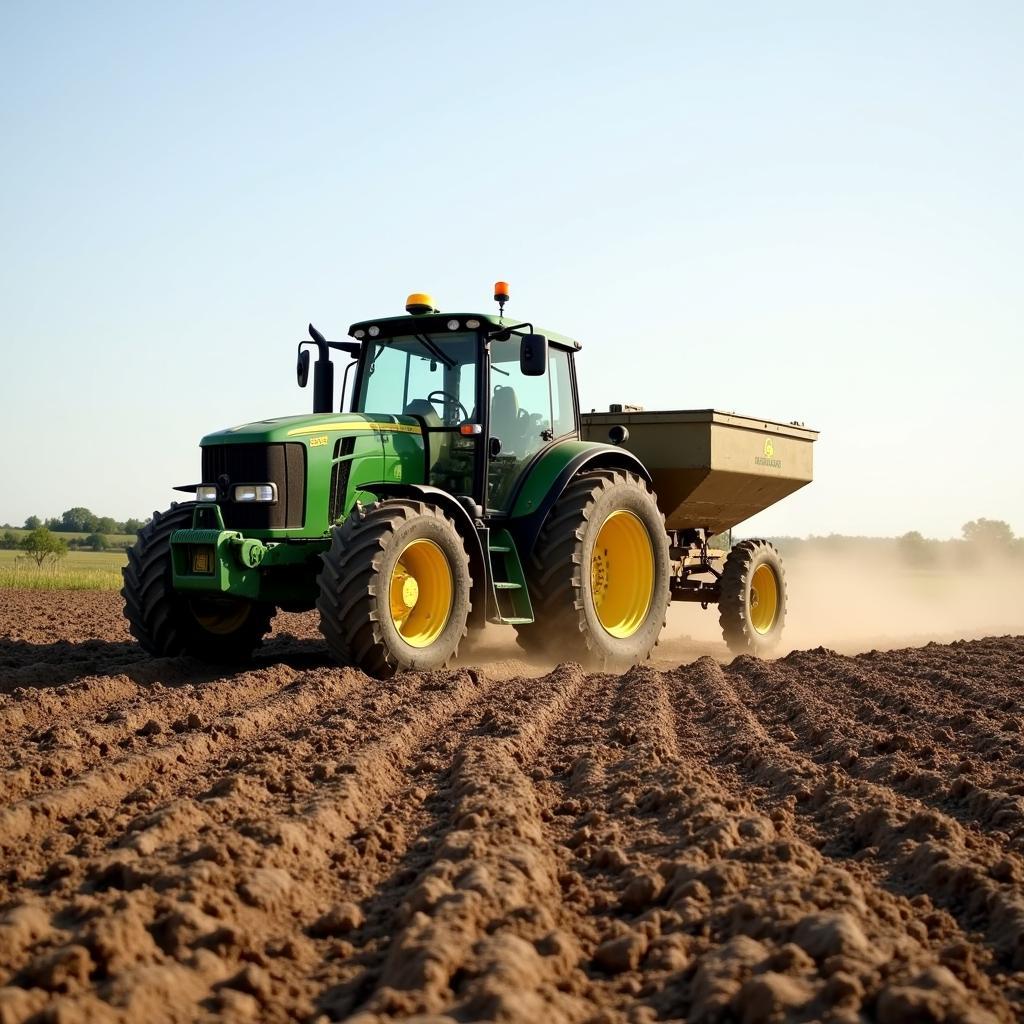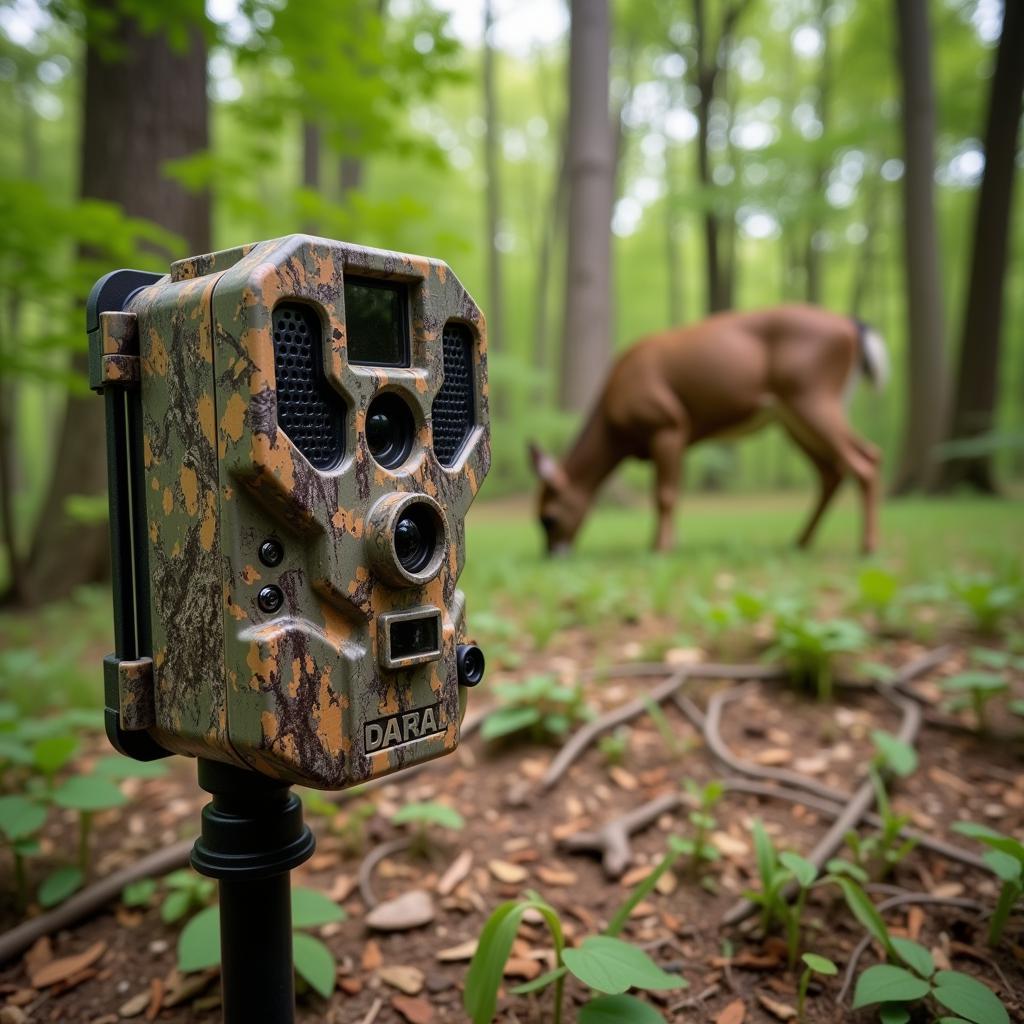Deer Food Plot Seed Mix is essential for attracting and maintaining a healthy deer population on your property. Whether you’re a seasoned hunter or a nature enthusiast, understanding the nuances of choosing the right seed mix is crucial for success. This guide will delve into the world of deer food plots, exploring various seed mixes, planting strategies, and tips to maximize your efforts. Let’s get started!
Choosing the right food plot mixes for deer is the first step towards a thriving deer population.
Understanding Deer Food Plot Seed Mixes
A successful deer food plot starts with selecting the appropriate deer food plot seed mix. This mix should cater to the specific needs of the deer in your area and consider the local climate and soil conditions. Different seed types offer varying nutritional values and attract deer during different seasons. Understanding these factors is key to creating a food plot that effectively supports the local deer herd throughout the year.
Factors to Consider When Choosing a Seed Mix
- Region: Different regions have varying climates and soil types. Research which seed mixes thrive best in your specific area.
- Deer Preferences: Deer have preferences for certain types of forage. Understanding what deer in your region prefer will help you choose a more appealing seed mix.
- Seasonality: Consider planting a mix that provides food throughout the year. This might involve a combination of cool-season and warm-season plants.
- Budget: Deer food plot seed mixes come in a range of prices. Set a budget before you start shopping to avoid overspending.
Choosing the Right Seed for Each Season
Deer have different nutritional needs throughout the year. Providing the right forage in each season is essential for their overall health and antler growth.
Spring Food Plot Seed Mix
Spring is a time of renewal and growth. Planting a spring food plot seed mix rich in protein and minerals can help deer recover from the winter months and support antler development. Consider incorporating clovers, alfalfa, and chicory into your spring mix.
Summer Food Plot Seed Mix
Summer food plots should focus on providing high-quality forage during the hot months. Plants like soybeans, lablab, and cowpeas can withstand the summer heat and provide essential nutrients.
Fall Deer Food Plot Seed Mix
As fall approaches and hunting season begins, consider planting a fall deer food plot seed mix that will attract deer to your property. Brassicas, such as turnips, radishes, and rape, are excellent choices for fall food plots. They provide a highly palatable and nutritious food source that deer find irresistible.
Winter Food Plot Seed Mix
Winter can be a challenging time for deer. Providing a winter food plot can help them survive the harsh conditions. Consider planting winter rye, oats, or wheat to provide a reliable food source during the colder months.
Planting and Maintaining Your Deer Food Plot
Once you’ve chosen the perfect deer food plot seed mix, proper planting and maintenance are essential for success.
Soil Preparation
Before planting, ensure your soil is properly prepared. This involves testing the soil pH and amending it as needed. A soil test can reveal nutrient deficiencies, allowing you to add the necessary fertilizers for optimal plant growth.
Planting Techniques
Different seed mixes require different planting techniques. Follow the instructions on the seed packaging for best results. Proper planting depth and spacing are crucial for successful germination and growth.
 Planting Deer Food Plot Seed Mix with Tractor
Planting Deer Food Plot Seed Mix with Tractor
Maintaining Your Food Plot
Regular maintenance is crucial for a thriving food plot. This includes weed control, fertilization, and occasional mowing to promote healthy growth and prevent overcrowding.
You could also consider planting food plot seed for turkey alongside your deer food plot to attract a wider variety of wildlife.
Maximizing Your Deer Food Plot’s Potential
Consider a shade food plot mix if your property has limited sunlight.
Attracting Deer to Your Food Plot
While a well-planted food plot is attractive to deer, you can further enhance its appeal by adding mineral licks or supplemental feed. These additions can provide essential nutrients and attract deer from a wider area.
“Providing a diverse and nutritious food source is crucial for attracting and maintaining a healthy deer population,” says Dr. Emily Carter, a wildlife biologist specializing in deer management. “A well-planned food plot can significantly improve deer health and antler growth.”
Monitoring Deer Activity
Monitoring deer activity around your food plot can provide valuable insights into its effectiveness. Trail cameras can help you track deer movement and determine which plants are most attractive to them. This information can guide your future planting decisions.
 Monitoring Deer Food Plot Activity with Trail Camera
Monitoring Deer Food Plot Activity with Trail Camera
Conclusion
Creating a successful deer food plot requires careful planning and execution. Choosing the right deer food plot seed mix, planting it correctly, and maintaining it throughout the year are essential steps in attracting and supporting a healthy deer population. By following the tips and strategies outlined in this guide, you can maximize your efforts and enjoy the rewards of a thriving deer herd on your property. Consider clover chicory food plots as they are highly attractive to deer.
FAQ
Q: What is the best time to plant a deer food plot?
A: The ideal planting time depends on the type of seed mix and your local climate.
Q: How much seed do I need for my food plot?
A: The amount of seed required depends on the size of your plot and the recommended seeding rate for your chosen mix.
Q: How often should I fertilize my food plot?
A: Fertilization frequency depends on your soil type and the specific needs of your chosen plants.
Q: How can I control weeds in my food plot?
A: Weed control methods include herbicides, mowing, and hand-pulling.
Q: What are some common mistakes to avoid when planting a deer food plot?
A: Common mistakes include improper soil preparation, incorrect planting depth, and neglecting to maintain the plot throughout the year.
Q: What are the benefits of planting a deer food plot?
A: Benefits include attracting deer, improving deer health, and providing hunting opportunities.
Q: How can I choose the right deer food plot seed mix for my area?
A: Consider your local climate, soil type, and the specific needs of the deer in your region.
For further assistance, please contact us at Phone Number: 02437655121, Email: minacones@gmail.com Or visit us at: 3PGH+8R9, ĐT70A, thôn Trung, Bắc Từ Liêm, Hà Nội, Việt Nam. We have a 24/7 customer service team.